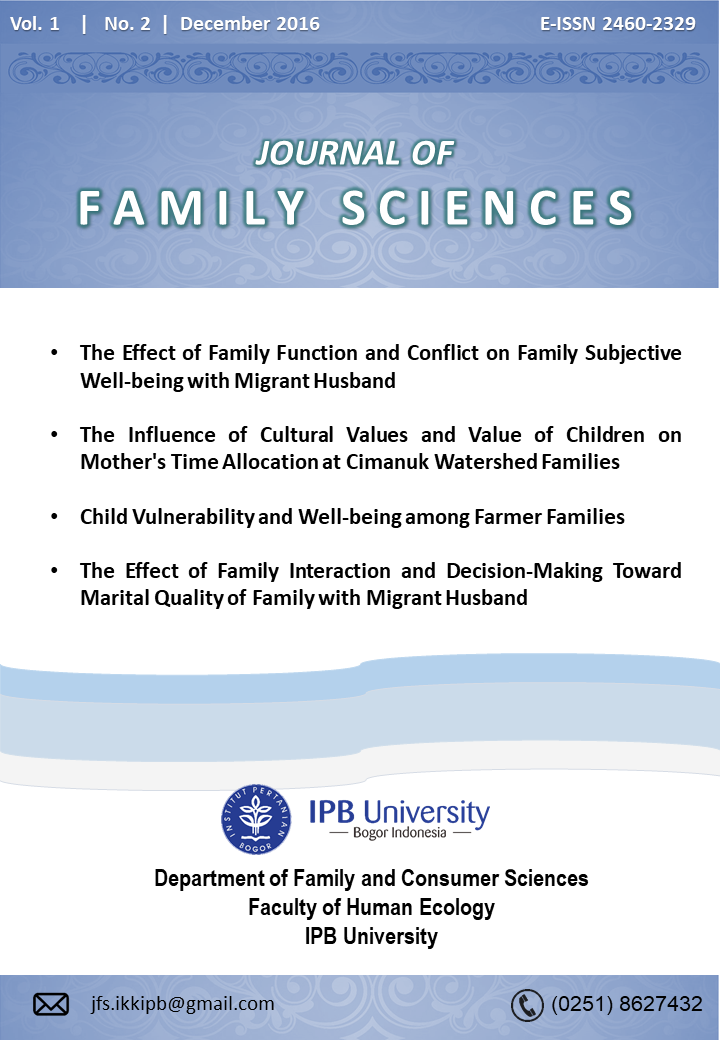Child Vulnerability and Well-being among Farmer Families
Abstract
This research aimed to identify vulnerability and well-being of children in a family of farmers, identify the typology of vulnerability and well-being of children in the family of farmers, and analyze the relationship between family characteristics, characteristics of children with the vulnerability and well-being of children. The population in this research is family farmers who have children of 4 and 5th grade who reside in the village Sindangjaya, District Cipanas, Cianjur with a sample of 35 children. Sampling was conducted using probability sampling method with random sampling techniques. The results showed that the internal susceptibility to family farmers is low, relatively low external vulnerability, and low well-being. Typology vulnerability of children and the well-being of children in a family of farmers included in Type 1 and Type 4. There was a significant negative correlation between family size and order of the child with the child's welfare, but there was no significant relationship between the characteristics of families and children with children's vulnerability.
Downloads
Authors who publish with this journal agree to the following terms:
- Authors retain copyright and grant the journal right of first publication with the work simultaneously licensed under

This work is licensed under a Creative Commons Attribution 4.0 International License. that allows others to share the work with an acknowledgement of the work's authorship and initial publication in this journal. - Authors are able to enter into separate, additional contractual arrangements for the non-exclusive distribution of the journal's published version of the work (e.g., post it to an institutional repository or publish it in a book), with an acknowledgement of its initial publication in this journal.
- Authors are permitted and encouraged to post their work online (e.g., in institutional repositories or on their website) prior to and during the submission process, as it can lead to productive exchanges, as well as earlier and greater citation of published work (See The Effect of Open Access).



_001.png)



